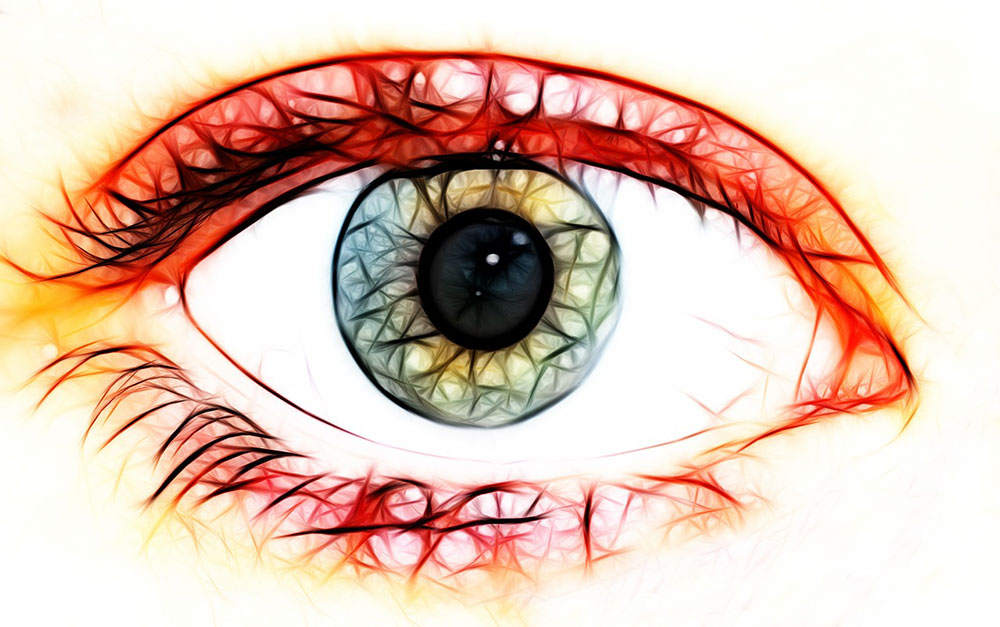Women’s Higher Risk for Some Eye Diseases
Women are more likely than men to have glaucoma and women are also more likely to be visually impaired or blind due to glaucoma. Also, women are 24 percent less likely to be treated for glaucoma. Cataract is somewhat more common in women, as well. Women should be sure to follow the Academy’s screening guidelines and adhere to their Eye M.D.’s follow-up appointment recommendations and treatment plans.
Low Vision
The term low vision describes vision loss that makes daily tasks difficult. Normal aging of the eye does not lead to low vision; it is a result of eye diseases, injuries or both. Low vision symptoms nclude loss of central and/or peripheral (side) vision, blurred or hazy vision or night blindness. A person may have trouble recognizing faces, reading, driving and shopping. If you experience any of these problems, it is important to see your Eye M.D., who will check for and treat any underlying conditions and advise on low vision resources and low vision aids and devices to help with reading and other daily tasks. Most people with low vision need brighter lighting in their living areas.
Avoid Falls and Related Eye Injuries
About half of all eye injuries occur in or around the home, most often during improvement projects (44 percent). The good news is that nearly all eye injuries can be prevented by using protective eyewear, so every household needs to have at least one pair of certified safety glasses on hand.
It’s also important to reduce the risk of falls, which become more likely as we age, due to changes in vision and balance. Consider taking these safety steps around the home to diminish the risks of injuring your eyes:
- Make sure that rugs and shower/bath/tub mats are slip-proof.
- Secure railings so that they are not loose.
- Cushion sharp corners and edges of furnishings and home fixtures.
Systemic health problems
Systemic health problems like high blood pressure and diabetes that may be diagnosed or become more problematic in midlife can also affect eye health. One warning sign of both high blood pressure and diabetes is when the ability to see clearly changes frequently. Be sure to keep your Eye M.D. informed about your health conditions and use of medications and nutritional supplements, as well as your exercise, eating, sleeping and other lifestyle choices.
Exercise
Our eyes need good blood circulation and oxygen intake, and both are stimulated by regular exercise. Regular exercise also helps keep our weight in the normal range, which reduces the risk of diabetes and of diabetic retinopathy. Gentler exercise, including walking, yoga, tai chi, or stretching and breathing, can also be effective ways to keep healthy. Remember to use sun safety and protective eyewear when enjoying sports and recreation.
Sleep
As we sleep, our eyes enjoy continuous lubrication. Also during sleep the eyes clear out irritants such as dust, allergens, or smoke that may have accumulated during the day.
Some research suggests that light-sensitive cells in the eye are important to our ability to regulate our wake-sleep cycles. This becomes more crucial as we age, when more people have problems with insomnia. While it’s important that we protect our eyes from over-exposure to UV light, our eyes also need exposure to some natural light every day to help maintain normal sleep-wake cycles.
source: “Tips for Eye Health in Adults Over 60.” aao.org American Academy of Ophthalmology. Aug. 2014, Web. Nov. 25th, 2017.
For more helpful eyecare and vision care tips, please visit our main blog page.


vibracion de motor
Aparatos de balanceo: clave para el funcionamiento estable y eficiente de las maquinarias.
En el entorno de la tecnologia avanzada, donde la productividad y la seguridad del dispositivo son de gran importancia, los dispositivos de equilibrado juegan un funcion crucial. Estos dispositivos especificos estan desarrollados para balancear y regular componentes rotativas, ya sea en maquinaria industrial, automoviles de transporte o incluso en aparatos domesticos.
Para los expertos en mantenimiento de sistemas y los ingenieros, trabajar con sistemas de ajuste es crucial para garantizar el operacion fluido y seguro de cualquier mecanismo giratorio. Gracias a estas opciones tecnologicas modernas, es posible reducir sustancialmente las vibraciones, el estruendo y la tension sobre los rodamientos, aumentando la tiempo de servicio de piezas valiosos.
Tambien significativo es el funcion que cumplen los sistemas de balanceo en la asistencia al comprador. El apoyo profesional y el reparacion regular empleando estos equipos habilitan ofrecer prestaciones de optima calidad, elevando la bienestar de los usuarios.
Para los propietarios de negocios, la financiamiento en estaciones de calibracion y detectores puede ser fundamental para aumentar la productividad y rendimiento de sus equipos. Esto es particularmente relevante para los empresarios que administran modestas y medianas organizaciones, donde cada elemento cuenta.
Por otro lado, los aparatos de equilibrado tienen una vasta implementacion en el area de la seguridad y el monitoreo de calidad. Posibilitan encontrar probables errores, evitando arreglos caras y averias a los sistemas. Mas aun, los resultados extraidos de estos equipos pueden emplearse para mejorar metodos y incrementar la exposicion en buscadores de consulta.
Las areas de uso de los sistemas de ajuste incluyen multiples sectores, desde la produccion de bicicletas hasta el supervision ecologico. No afecta si se considera de extensas manufacturas de fabrica o limitados talleres de uso personal, los equipos de calibracion son fundamentales para asegurar un funcionamiento optimo y libre de detenciones.
https://shvejnye.ru/